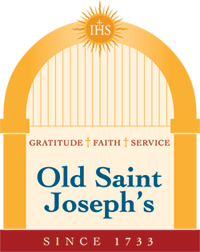AMDG
Dear OSJ Family,
Today, as we begin this holy time of Advent—from the Latin “to come”—we are reminded that this liturgical season exists to help us to prepare spiritually for Christ’s “first coming” at his nativity in Bethlehem, and his “second coming” at the end of time when he will “judge the living and the dead.” The Church teaches us, “Advent has a twofold character: as a season to prepare for Christmas when Christ’s first coming to us is remembered; as a season when that remembrance directs the mind and heart to await Christ’s Second Coming at the end of time. Advent is thus a period for devout and joyful expectation.” In an article shared with us by a valued member of OSJ’s Liturgy Board called Advent as a Liturgical Season written by theologian Fr. Edward McNamara, he notes that “It would appear that the liturgical celebration of Advent originated in southern France and Spain, at times with a marked penitential character. In Rome, we find the first traces of this liturgical celebration in the 6th Century sometimes with five or six Sundays. The four-Sunday Advent might have been established by Pope Gregory the Great after the year 546, although the longer Advent is still found in some places up until the 11th century.” Indeed, it is fascinating to see how the four weeks of Advent which we now observe now developed and progressed in the life of our Church.
Fr. McNamara adds that under the influence of Spanish and French liturgical practice the Roman Advent began to slowly take on a “penitential character” (no longer the case after Vatican II) and took on some of the practices that we still observe today. For example, some of these practices are the use of violet vestments and sanctuary appointments, and the omission of the Gloria. Also, the beautiful prayers that the priest offers at the opening of Mass, over the gifts and after communion called the “collects” (literally the collecting together of the people’s prayers) take on a new focus. The collects of Advent emphasize one common theme: the coming of Christ both in the incarnation (first coming) and at the end of time (second coming). These prayers, while joyful with “no trace of fear and sadness” call us to greater holiness, purification and union with God and with one another.
Again, it is important to recall that Advent is no longer considered a penitential season, as is Lent, but rather the use of the violet vestments and the omission of the Gloria are meant to help to focus on our joyful preparation of Christ’s second coming and the festive celebration of Jesus among us at Christmas! Each week throughout Advent, I intend to elucidate the various liturgical customs and practices which are at the heart of this of this holy season.
Next week, we will look at the Advent wreath!
Blessed Advent,
Fr Phil Florio, SJ
Pastor
